Secretary
91 - 9445005032
The Association of Petroleum Geologist (APG) India successfully conducted a comprehensive field workshop on Sedimentary Facies Analysis and Basin Evaluation in the Indo-Tsangpo suture zone (ITSZ) from 10th to 18th October 2023. The workshop aimed to enhance the understanding of subduction and collision tectonics in the Himalayan and Trans Himalayanregion tectonically separated by ITSZ.
Executives from prominent organizations such as ONGC, DGH, OVL, and Vedanta actively participated in the workshop, contributing to the diversity of perspectives and expertise. This collaborative effort fostered a rich learning environment, facilitating the exchange of knowledge and insights among industry professionals.
The Magnificent field workshop was inaugurated by Shri. Vikas J Pandey, President of APG and an esteemed representative of ONGC. His inaugural address set the tone for an insightful exploration of the geological complexities present in Tethyan and Trans-Himalaya region in the Indo-Tsangpo suture zone.
The workshop was led by Professor Rajeev Upadhyay from Kumaon University, Nainital - Uttarakhand. Prof. Upadhyay’s profound expertise and engaging teaching style ensured that participants gained valuable insights into sedimentary facies analysis and basin evaluation techniques specific to the unique geological context of the Indo-Tsangpo suture zone and about the complexity and geo dynamic processes related to the plate collision and closing of the Tethys Sea.
Throughout the eight-day workshop, participants actively delved into an exploration of the region, immersing themselves in hands-on activities and field excursions. The program involved tasks such as identifying lithological variations, locating the contact points of suture zones and plate margins, and sampling the rock specimens and representative fossils in the Himalayan and Trans-Himalayan region.
The field interactive sessions were strategically designed to elevate participants' practical skills specific to geological processes. The focus extended from understanding the geological timelines spanning from Precambrian to Recent times in context of the Himalayan Orogeny. Notably, the workshop offered a comprehensive examination of collision tectonics in the Indo-Tsangpo suture zone, providing participants with a holistic perspective on the geological process shaped the region.
Day 1 of the immersive field workshop commenced with visit to Thiksey village. Thisregion is enveloped by the Ladakh batholiths, exhibiting prominent grano-diorite bands within the darker dioritic mass. The batholith's extrusion occurredin four distinct phases spanning from 58 to 50 million years ago. The field exploration extended to Hemis, where conglomerate situated in an intermontane setting, revealing intriguing Siwalik equi-fossils was observed. However, the true highlight of the day unfolded at a remarkable section along the Lato bridge where, the surface manifestation of the Indus-Tsangpo Suture Zone (ITSZ) was prominently visible. Above the thrustan amalgamation of ophiolitic melange and conglomerate from the Asian plate is present. Beneath the thrust, the stratigraphy shifted to the turbidite slope deposits originating from the Indian plate, adding layers of complexity.
The second day traverse charted a course to the northwest from Leh, encountering moraine sediments en route to Magnetic Hill. The nomenclature of Magnetic Hill stems from the subtle ferro/ferri-magnetism exhibited by iron-rich rocks originating from the plutonic protoliths. A pivotal juncture unfolded at the confluence of the Indus and Zanskar rivers, towards southward turn to Chilling village in the dip direction. The dip traverse afforded a revealing glimpse into the geological tapestry, showcasing Oligocene conglomerate supported by oriented red-green clasts from the Indus Group, indicative of continental marginal marine tidal facies. Noteworthy features included substantial recumbent folds with Cretaceous rocks forming the core and Eocene rocks flanking the limbs. Further the Eocene dolomitic limestone, forming a reef set-up rich in nummulites and thalessenoid burrows, emblematic of a shallow marine environment during the Eocene epoch was observed.
The day culminated at Lamayaru, where the landscape exhibited magnificent Quaternary glacio-lacustrine freshwater deposits, showcasing remarkable fossils such as Ostracods. These deposits were laid bare due to the breach of a glacial lake, providing a captivating window into the geological history of the region.
Day 3 commenced with an exploration of the Lamayaru Complex, an intriguing turbidite featuring low-grade slates to phyllites adorned with flattened Daonella Indica bivalves, characteristic of the mid-to-late Triassic period. The geological continuity extends to the Fotula Pass rocks, spanning from the Middle Triassic to the Upper Cretaceous.Heading southward, colossal hills emerge, formed by dolomitic shelf sediments originating from the Indian plate. In the northern direction, the landscape transforms, revealing Ophiolitic melange and Fore-arc sediments. Our traverse through the Kanji Gorge uncovered sections displaying recrystallized Rudist bivalves from the Chikkim Formation, indicative of the Tethys Sea during the Aptian-Albian period.
A significant geological encounter took place at the thrusted contact of the Indus-Tsangpo Suture Zone (ITSZ) between the Lamayaru Complex and Ophiolitic Melange. Notably, the Ophiolitic Melange displayed the presence of radiolarian chert, a novel observation in this context. The Chiktan Nalla section showcased intercalations of green and red sandstone, siltstone, and shales, forming the turbidite Nindam Formation. These deposits, spanning from the Upper Cretaceous to Paleocene, represent trench deposits featuring impressive flute casts, parallel, and convolute laminations.
The geological narrative continued with the exposure of enormous pillow basalts from the Ophiolitic Melange in this section, adding another layer of complexity to our understanding of the region's geological history.
On the Day 4 traverse was taken due Noth from Leh to Diskit Village via Khardung pass. Along this entire traverse, entire components of the ophiolitic melange with peridotites & pyroxenites at the base, Gabbro, sheeted dykes complex, basaltic pillow lavas and seafloor radiolarian chert were observed. In the Khardung region, the geological formations date back to approximately 68-60 million years ago and consist of a diverse range of volcanic rocks, including Basalt, Andesite, and Rhyolite. The presence of agglomerate with volcanic bomb clasts suggests explosive volcanic activity. Additionally, minor occurrences of pitchblende indicate a connection with an Island Arc tholeiitic volcanic system.
Moving to the Khalsar section, the rocks undergo significant deformation due to the Karakoram transfer Fault, resulting in highly sheared chlorite schist. The proximity to this fault zone is marked by increased metamorphism. However, with distance from the fault, less metamorphosed chlorite schist and its precursor, chlorite-bearing Shyok volcanics, are evident.
As one ascends a hill along the road, a distinct geological boundary known as the Shyok suture zone becomes apparent. The hanging wall is composed of greenish Shyok metavolcanics dating to 118 million years ago, while the footwall comprises Eocene to Cretaceous Saltoro Formation dolomitic limestone. This geological contact is characterized by a thrust fault trending east-west and dipping north.A second prominent thrust contact is observed, separating the Saltoro Formation from remnants of the Leh-Ladakh arc system in the back arc. This thrust dips towards the northeast, indicating the tectonic forces that have shaped the geological history of the region.
Day 5 traverse was to northward from Diskit village to Thang, the last village in India. Along this route, the geological features of the Nubra Valley became apparent, showcasing a combination of glacio-fluvio-aeolian deposits. Noteworthy elements included moraines, braided channels of the Shyok River, and the presence of distinctive sand dunes.In the Waris village in the Siachen glacial valley, observations revealed the occurrence of pillow basalt and radiolarian cherts within the ophiolitic melange. This geological setting provided insights into the complex history of the region.Continuing journey beyond the Shyok suture zone to the north, the landscape unfolded to reveal the rocks of the Karakoram Batholiths. This marked a significant geological transition, showcasing the unique characteristics of this intrusive igneous formation.
The village of Thang holds special significance as it serves as the demarcation point between India and Pakistan-occupied Kashmir (PoK), with the Shyok River valley acting as the natural boundary. This geological setting not only delineates political boundaries but also represents a fascinating intersection of diverse geological formations, adding depth to our understanding of the Earth's dynamic processes in this region
On the sixth day, we undertook an extensive and demanding expedition heading southward to reach Pangong Lake, traversing the deposits of the Shyok River. A geological section near Sati village provided a fascinating glimpse into the region's history, revealing six distinct stages of seismites within deposits shaped by glacial, fluvial, and lacustrine processes.
Before arriving at Shyok Village to the southeast, we encountered foliated Karakoram batholiths exhibiting slickensides—a noteworthy geological feature indicative of tectonic activity. Subsequently, we pressed on with our journey toward Pangong Lake.Pangong Lake, a saline water body, is shared between India (30%) and China (70%). The lake's dynamic color changes are a reflection of its mineral composition. As we directed our attention to the northeast, the landscape was graced by the imposing presence of the magnificent Karakoram Batholiths, adding a geological spectacle to our exploration.
The success of this workshop is attributed to the collaborative efforts of APG, the esteemed presence of industry leaders, and the expert guidance provided by Professor Rajiv Upadhyay. The knowledge gained during this workshop will undoubtedly contribute to advancing exploration and understanding in the field of petroleum geology within the Indo-Tsangpo suture zone and in the context of Himalayan Foreland Basins.
This workshop serves as a testament to APG’s commitment to fostering knowledge exchange and professional development within the geoscience community. The collaboration between academia, industry, and professional organizations showcased the importance of such initiatives in advancing the understanding of complex geological terrains.
In conclusion, the Sedimentary Facies Analysis and Basin Evaluation workshop in Leh, India, stands as a noteworthy event in the field of petroleum geology, marking a significant contribution to the ongoing exploration and understanding of the Indo-Tsangpo suture zone.
We express our sincere gratitude to APG India for orchestrating an unforgettable Geological Field Trip to Leh. This venture owes its success to the unwavering commitment and diligence of the entire APG India team, who dedicated themselves tirelessly to ensure the triumph of this educational expedition.
Our heartfelt thanks extend to our esteemed Patron, APG Smt. Sushma Rawat, whose visionary leadership in the field of geology inspired us to embark on this journey. We are deeply thankful for your patronage, which made this field trip possible.
Special appreciation goes to President APG Shri Vikas J. Pandey for inaugurating the Field Trip and being present during its initial days. Your belief in the significance of field-based geological education empowered us to explore the wonders of Himalayan geology. We express sincere gratitude for your invaluable guidance.
We acknowledge the dedication and enthusiasm of Vice President Shri Nandan Verma, whose exceptional commitment greatly contributed to the trip's success. Your role has been instrumental in achieving the expedition's goals.
Our regards extend to Secretary Shri J.P. Dobriyal for meticulous planning and coordination, critical to the seamless execution of the field trip. Your tireless efforts ensured a well-structured and successful expedition.
A special mention goes to Prof. Rajeev Upadhyay, Kumaun University, whose mentorship enriched our Geological Trip. With over 35 years of experience in the Himalayas, your extensive knowledge, patience, and approachability were exemplary. Thank you for being a reservoir of geological wisdom and inspiration.
In closing, our heartfelt gratitude goes to coordinators Shri Asis Mandal, Shri Vijay Singh, and Shri Bhargav Kashyap for their exceptional efforts in planning and execution.
This field trip provided a unique opportunity to explore Leh's geological wonders, expand our knowledge, and experience the rich geological heritage. The learnings gained will be invaluable in our academic and professional pursuits.
We also acknowledge the support of local authorities, communities, and all who welcomed us. Your hospitality enriched our experience.
In conclusion, we thank APG India for their vision in organizing this Geological Field Trip to Leh. The journey broadened our horizons, deepened our appreciation for Earth's geological wonders, and strengthened our commitment to geological science. With gained knowledge and memories, we eagerly anticipate continuing our exploration of Earth's geological mysteries and contributing to the field
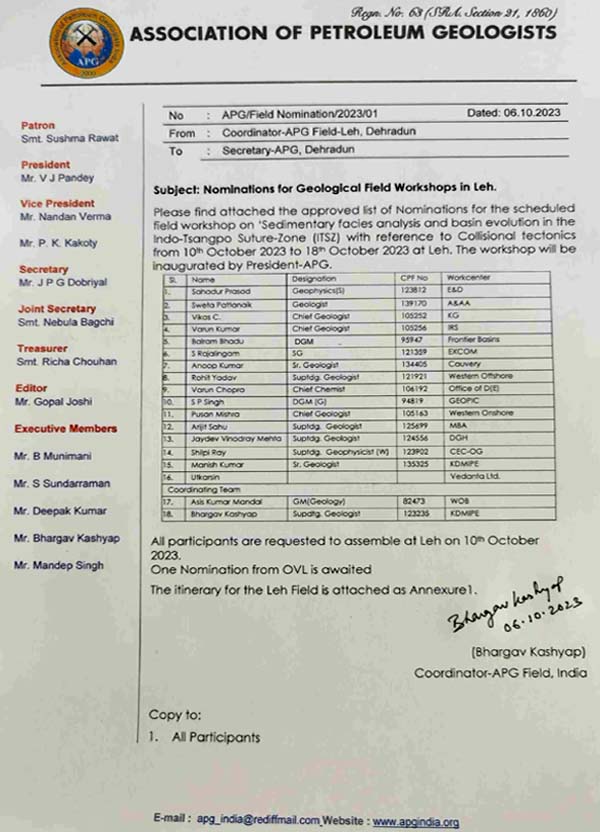
The Southern Regional Chapter of the Association of Petroleum Geologists-India organized a Geological Field trip to Cuddapah Basin in Andhra Pradesh from 13th to 17th March 2022. The field trip comes as part of its endeavor to provide a platform for the budding Geoscientists to interact with experienced Geoscientists and facilitate knowledge transfer. The theme of the workshop was to study the Cyclicity in Proterozoic Carbonate Depositional Systems.
Dr. Anand S. Kale, Consulting Geologist, withhis knowledge and experience in Proterozoic Basins of India and Petroleum Systems, guided the team expertly on the field.
The trip started on the morning of 13thMarch 2022. The team of young executives from ONGC, OIL, IOCL and students from Presidency University, Bengaluru & Madras University-Applied Geology, Chennai assembled at Bengaluru Airport (Fig.1a) and started the journey towards Anantapur and reached the town by evening. After freshening, a kick off lecture by Dr. Kale kindled the excited young minds of the team, curious to feast their eyes on the Proterozoic Rocks of Cuddapah Basin(Fig.1b).
On the second day [14.03.2022], the team first visited the Archaean Basement and studied the nature of Pre-Cambrian rocks and the pegmatite vein intrusions in the basement(Fig.2a). After this, the team studied the Dolomites of Vempalle Formation along a road cut section which exposed the cyclic nature of Carbonate Sedimentation and the effect of sea-level & accommodation fluctuations on the deposition of these carbonates. Also, these Vempalle Dolomites exhibited beautiful stromatoliticorgano-sedimentrystructures which mesmerized the team(Fig.2b). After lunch, the team examined the outcrops along the Papaghani River which exposed the transgressive, unconformable contact between GulcheruQuratzite and Vempalle Formation(Fig.2c-d). Various micro lithotypes& sedimentary structures in the Gulcheru(Fig.2e) &Vempalle Formation (Fig.2f) were studied at this location. The day ended at the Pulivendla-Kadri road where the team studied the Eparchaean Unconformity (Fig.2g): contact between Archaean Basement and the Gulcheru Quartzite, VempalleStromatolitic&Oolitic dolomites (Fig.2h) and their relation in with respect to depositional environment changes.
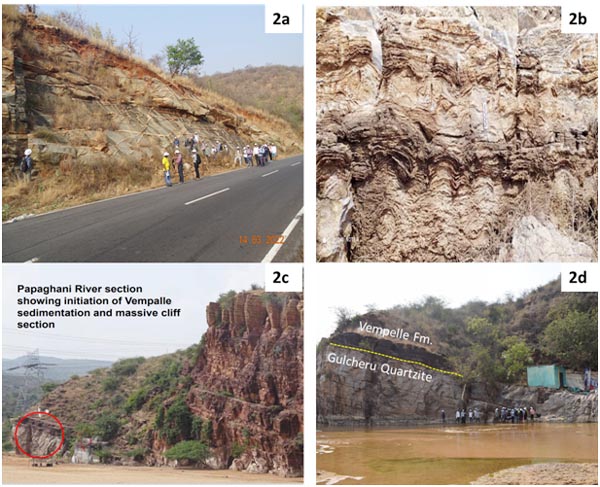
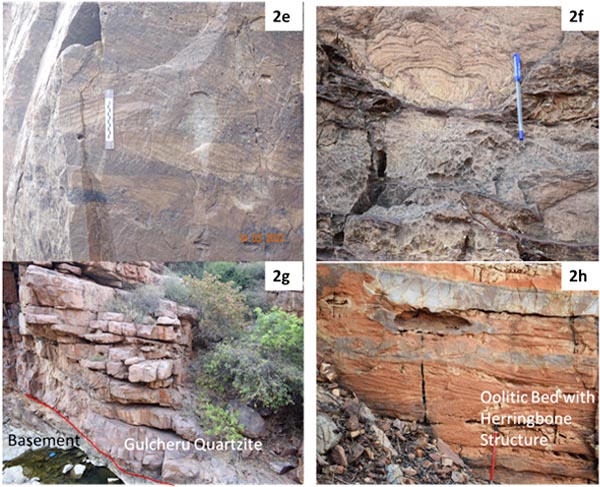
On day three [15.03.2022], the team visited the Tadpatri road section which exposed the angular Eparchaean unconformity between the Archean schist and Gulcheru quartzite(Fig.3a). A team building exercise on the Gulcheruquartzites demonstrated to the participants the process for understanding geological sections through the logical steps of observation – correlation – interpretation and preparation of lithologs (Fig.3b). After this, the team examined the Vempallae Formation exposed on the road side section of Tadpatri, and the sedimentological investigation of the late Paleoproterozoic Vempalle Formation revealed three facies associations that range from supratidal to deep subtidal. Sedimentary rocks of this succession are dominated by heterolithic carbonate mudstone, intraformational conglomerates, and a variety of columnar, domal, and stratiformmicrobialitefacies. Vempalle Formation strata record the development of a regional stromatolite complex within a low-relief carbonate ramp system. Stromatolite morphologies are arrayed with depth, and their development in mid-ramp regions was instrumental in controlling the hydrodynamic conditions of the platform, and particularly that of inner-ramp environments. Visited Vempalle – Pulivendla contact (Fig.3c)
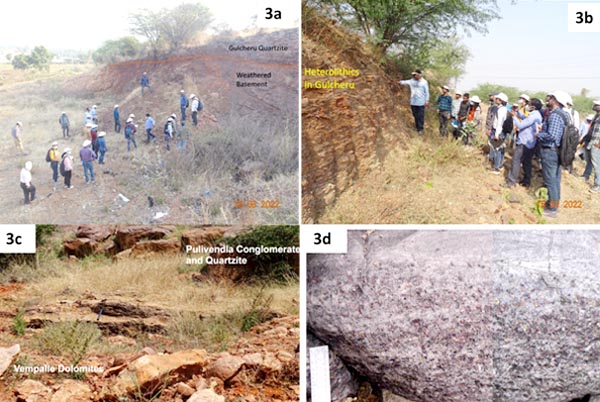
The second half of the day was devoted to the Kurnool Group of sediments. Banganapalle quartzite (Fig.3d) was visited near Petnikonta, Narji limestone at Bugga and Owk at Belum. After this, the team visited the majestic Belum Caves to study the karst features and karst geomorphology of the Narji Limestone(Fig.3e-f). Everyone was mesmerized to see the intricate caves and features of stalagmite and stalactites. The day ended with a traverse from Narji Limestone to Owk Shale and Paniam Quartzite(Fig.3g) which elaborated the change in depositional environment from marine to fluvial conditions. Another hillock south-east to the traversed hill is also capped by Paniam Sandstone (Fig. 3h).
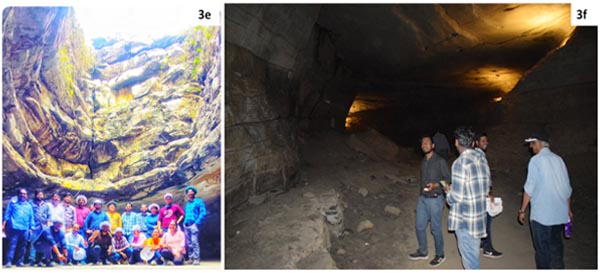
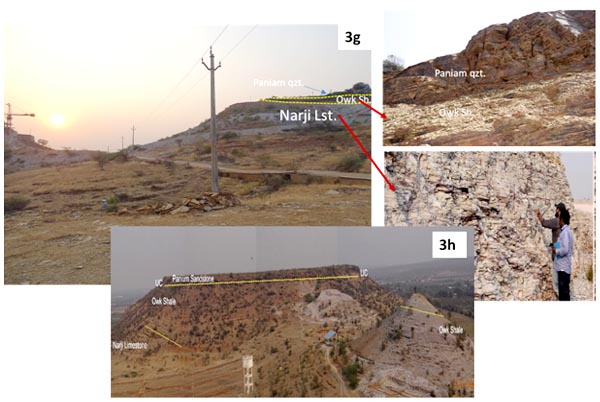
Day four[16.03.2022] started with examining Eparchaean Unconformity with a basal conglomerate of Gulcheru quartzite overlying the weathered Basement. Following this, the team visited a hill-cut section near Parnapalli which showcased an exceptional display of a complex faulted and folded strata of Vempalle Formation(Fig.4a).After this, the team examined various lithologies of the Tadpatri Formation ranging from sedimentary lithologies viz. Shales, Limestones, Quartzites and igneous rocks like dolerites, basalts, pyroclastics, rhyolites and volcanic agglomerates (Fig. 4b-c). These demonstrate the complex nature of Tadpatri Formation and the frequent changes in the depositional environment. Gutter cast feature are noticed in Tadpatri Fm. indicating storm erosions (Fig. 4d). After lunch, the team visited the Gandikota quartzite road section on the way to Gandikota Canyon, which displayed various components of a fluvio -deltaic system. Dr Kale explained to the team about the fluvial architecture of the Gandikota Quartzite (Fig. 4e) and how the changes in the river morphology affected the depositional patterns. The last point was the Gandikota Canyon, also known as the Grand Canyon of India, where the Pennar River cut across the Gandikota Quartzite exposing the canyon(Fig.4f).
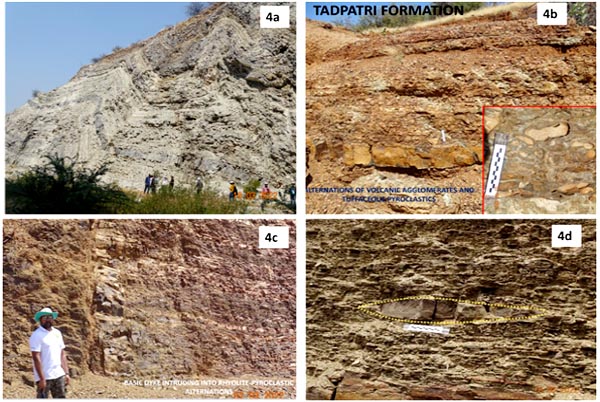
Against the Backdrop of Gandikota Canyon and diminishing sunlight, Secretary, APG Southern Regional Chapter Balaji Singh and Field Expert Dr. Anand S. Kale gave their concluding remarks. This marked the completion of the Cuddapah Geological field trip 2022 by the APG Southern Chapter. On 17th March 2022, the whole team returned back to their respective work centers safely.
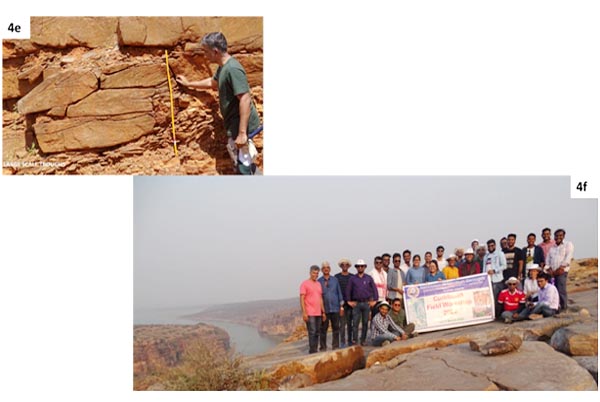
Despite the dry weather and high temperatures, the enthusiasm and curiosity of the whole team was never less than 100%. The whole trip was conceptualized to act as a pre-cursor for the forthcoming Geo-India conference to be conducted later this year. In this aspect, the tour was highly successful. Further, the exposure to outcrops by the young G&G team will stand them in good stead when they interpret the soon to be acquired data in Cuddappah Basin and hopefully their efforts would upgrade the basin from Cat-III to Cat -II or Cat-I basin at the earliest.
This field trip added one more feather in the cap of APG Southern Regional Chapter in its endeavor to accelerate the interaction and exchange of knowledge between the young and the experienced geoscientists.
The participants(Annexure-1) expressed sincere thanks to President, APG-India – Shri. S N Chitnis& Vice-President, APG-India Southern Chapter – Shri. R K Dhasmana, for organising this workshop; Dr. A. Kale for guiding through the field and Shri Balaji Singh & Shri. Karthikeyan LAV for meticulous planning and execution of the Field Trip.
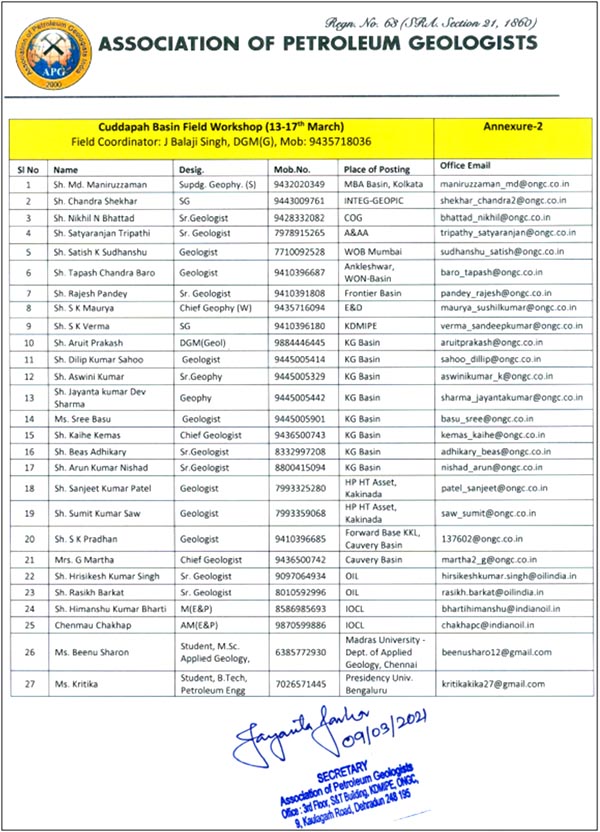
Note: S. No. 15 not participated in the workshop.
The Association of Petroleum Geologists (APG India) organized a Geological Field trip to Kutch in Gujarat from 12thto 16th March 2022. The field trip comes as part of its endeavour to provide a platform for budding geoscientists to learn and interact with the stalwarts of the industry and to facilitate knowledge transfer.Further, Kutch Basin being a part of WON Basin’s exploration portfolio,the trip will help the geoscientists to understand the depositional environments prevalent in Kutch Basin and will aid in interpretation.
The APG Kutch team comprised of executives from various organisations i.e. ONGC, OIL and IOCL. First day of field work started on early morning of 13th. The day was dedicated to understanding the Tertiary sequences. After the flag-off the team left for their first site which was the type section of E. Eocene Naredi formationwhere the Basaltic Trap was overlain by E.Eocene Naredi formation. Presence of WRS at the junction was also observed and the section was a classic example of Non-conformity. Moving on the team visited Harudi cliff section (Fig-2) consisting of red-green Shale alternations as part of a TST overlain by fossiliferous limestonesandfluvial sandstone facies as part of HST.
Afterwards the team visited one of the most beautiful geological sections of FulraLimestones at Rakdi River section. The limestones are fossiliferous in nature and are part of an aggradational carbonate sequence. The day was called off at Early Miocene Rampar Section where the team learnt about unstable carbonate platforms and their products like clastic carbonates.
The second day was also dedicated to the study of Tertiary Sequences and the field started with the study of a First Order Sequence Boundary between Rift and Post-Rift Passive Margin Sequence.The team then headed to study about intrusives (Doleritic dykes) which formed concomitant with the “Reunion Hotspot” activity during the Late Cretaceous Deccan volcanic event.
After this, the team studied Early Miocene carbonate sequence at Kankawati River Section which were Homotaxial to L3 limestones of Mumbai High. Post Lunch the team headed to Mandvi Beach where Beach micro-environments were discussed at length. On the way back the team witnessed the prograding delta front sequence of Early Cretaceous Bhuj Sandstone overlain by aggrading packages of a HST sequence in the road cut sections.
The third day was dedicated purely to the study of Mesozoics and the trip started with the study of Middle Jurassic (Jhumara Sequence) Half Dome formed along the Katrol Hill Fault. A large Ammonite was discovered in the Middle Jurassic Sandstones of the dome by the team.After this the team studied the type section of Late Jurrasic Jhuran formation where Progradational Delta Front Sandstones are overlain by Aggradational Sandstones. On the way to Patcham Island, the team learned about the tectonic framework and structural elements of Kutch Mainland uplift and Banni Half Graben. The team visited the Babia cliff to study the massive Sandstones and on the way back witnessed the Magnetic Anomaly at Patcham Island where the vehicles of the group rolled upslope without any power whatsoever. The trip ended at Ranna desiccated sea. It is pertinent to mention that as per joint study done by group of universities lead by Kutch University, the presence of halophiles and diversity of microorganisms in the Rann provides a potential testing site for carrying out future Mars exploration studies.
This field trip added one more feather in the cap of APG Vadodara Regional Chapter in its endeavour to promote mentoring of budding Geoscientists. On the next day; 16th March, the whole team started their return to their respective work centres carrying with them the experience and memories for a lifetime.
APG expresses its gratitude to Patron Shri R.K Srivastava for his support and encouragement to undertake this trip.The trip was made successful due to the unrelenting efforts of the APG team ably led by Shri S.N.Chitnis, ED, President-APG India,and ShriJayanta Sarkar Secretary-APG India. The team further acknowledges the unwavering support and guidance provided by Shri. KRK Singh, ED-BM Won Basin, Vice President-APG VRC, Shri Mohanasundaram B, Secretary/Coordinator and field guide Dr. AlokDave. The support of Oil India Ltd and IOCL is gratefully acknowledged.
Kaza, Spiti Valley, Himachal Pradesh from 30.09.2021 to 04.10.2021
Association of Petroleum Geologists (APG), Indiaorganized a geological field excursion around Kaza, Spiti Valley, Himachal Pradesh from 30.09.2021 to 04.10.2021.The excursion was graced by the presence of Shri R. K. Srivastava,Director (Exploration), ONGC& Patron APG and Shri Anurag Sharma,Director (Onshore), ONGC. Dr. Suraj Parcha, Retd. Scientist G, Wadia Institute of Himalayan Geology, with more than thirty years of vast experience in Tethyan Himalaya, accompanied the team as an expert and guide.A team of twelve geoscientists from E&D Directorate, GEOPIC, KDMIPE and Frontier Basins, Dehradun participated in the geological excursion which was led by Shri S. N. Chitnis, ED-HoI, KDMIPE & President APG and Shri Vishal Shastri, ED-HoI GEOPIC.
The enthused team assembled at KDMIPE Campus in the early morning of 30th September, 2021 and started their voyage to the realms of Himalayan geology.In the initial stage of excursion team travelled to Manali via. Bilaspur-Mandi-Kullu and during the course of traverse Siwaliks and Dharamsala Group of rocks belonging to sub-Himalayan sector were observed up to Mandi and beyond Mandi rocks belonging to the Lesser and Higher Himalaya were encountered up to Manali.
The geological traverse up to Kaza, Spiti valley via Gramphu-Batal-Kunzam La-Losar provided exquisiteexposure of entire Higher Himalayan crystalline, Palaeozoicand Mesozoics sequences of the Spiti valley which is considered as a geological repository of Tethyan Himalaya.During the field trip special emphasis was given on locating and characterising the Precambrian-Cambrian (P-C) and Permian-Triassic (P-T) boundaries. The P-C boundary was located in Batal area where high grade Vaikrita group of rocks gradually grade into low grade metamorphic rocks of Haimanta group.The team also carried out detailed geological study in Tabo area where Permian-Triassic (P-T) boundaryis well preserved and identified between Gungri Formation (Upper Permian) and Mikin Formation (Early Triassic). Gungri Formation is represented byblack, calcareous, silty shale, shale with cherty, phosphatic-calcareous nodules and characterized by presence of Brachiopods, Lamellibranchs, Bivalves and Zoophycoswith sometrace fossils. Mikin Formationcomprises of mainly limestone, shale, nodular limestone, dolomite and occasionally cherty shales along with abundant fossils of Triassic Ammonites, e.g., Octaceras, Ophiceras, Meekoceras Zones and Hedenstromia.Thango-Takache (Ordovician Limestone, Shale and Sandstone) formations disconformablyoverlain by Muth Formation (Devonian Sandstone and Quartzite) were observed near Kunzam La.
Complex structures wereabundantly encountered during the course of the excursion displaying intensity of deformation experienced by Tethyan sediment due to the great Himalayan orogeny.These structures included tight and overturned folds, imbricate thrusting, sub-vertical beddings etc.
The team travelled back to Dehradun from Manali on 4th October, 2021.The geological field trip had been very enriching for the geoscientists in understanding the Himalayan Geology and structural complexity present therein.
Kaza, Spiti Valley, Himachal Pradesh from 30.09.2021 to 04.10.2021
Association of Petroleum Geologists (APG), Indiaorganized a geological field excursion around Kaza, Spiti Valley, Himachal Pradesh from 30.09.2021 to 04.10.2021.The excursion was graced by the presence of Shri R. K. Srivastava,Director (Exploration), ONGC& Patron APG and Shri Anurag Sharma,Director (Onshore), ONGC. Dr. Suraj Parcha, Retd. Scientist G, Wadia Institute of Himalayan Geology, with more than thirty years of vast experience in Tethyan Himalaya, accompanied the team as an expert and guide.A team of twelve geoscientists from E&D Directorate, GEOPIC, KDMIPE and Frontier Basins, Dehradun participated in the geological excursion which was led by Shri S. N. Chitnis, ED-HoI, KDMIPE & President APG and Shri Vishal Shastri, ED-HoI GEOPIC.
The enthused team assembled at KDMIPE Campus in the early morning of 30th September, 2021 and started their voyage to the realms of Himalayan geology.In the initial stage of excursion team travelled to Manali via. Bilaspur-Mandi-Kullu and during the course of traverse Siwaliks and Dharamsala Group of rocks belonging to sub-Himalayan sector were observed up to Mandi and beyond Mandi rocks belonging to the Lesser and Higher Himalaya were encountered up to Manali.
The geological traverse up to Kaza, Spiti valley via Gramphu-Batal-Kunzam La-Losar provided exquisiteexposure of entire Higher Himalayan crystalline, Palaeozoicand Mesozoics sequences of the Spiti valley which is considered as a geological repository of Tethyan Himalaya.During the field trip special emphasis was given on locating and characterising the Precambrian-Cambrian (P-C) and Permian-Triassic (P-T) boundaries. The P-C boundary was located in Batal area where high grade Vaikrita group of rocks gradually grade into low grade metamorphic rocks of Haimanta group.The team also carried out detailed geological study in Tabo area where Permian-Triassic (P-T) boundaryis well preserved and identified between Gungri Formation (Upper Permian) and Mikin Formation (Early Triassic). Gungri Formation is represented byblack, calcareous, silty shale, shale with cherty, phosphatic-calcareous nodules and characterized by presence of Brachiopods, Lamellibranchs, Bivalves and Zoophycoswith sometrace fossils. Mikin Formationcomprises of mainly limestone, shale, nodular limestone, dolomite and occasionally cherty shales along with abundant fossils of Triassic Ammonites, e.g., Octaceras, Ophiceras, Meekoceras Zones and Hedenstromia.Thango-Takache (Ordovician Limestone, Shale and Sandstone) formations disconformablyoverlain by Muth Formation (Devonian Sandstone and Quartzite) were observed near Kunzam La.
Complex structures wereabundantly encountered during the course of the excursion displaying intensity of deformation experienced by Tethyan sediment due to the great Himalayan orogeny.These structures included tight and overturned folds, imbricate thrusting, sub-vertical beddings etc.
The team travelled back to Dehradun from Manali on 4th October, 2021.The geological field trip had been very enriching for the geoscientists in understanding the Himalayan Geology and structural complexity present therein.
Leh - Ladakh - Zanskar Sector - 2016 (J & K) - 20th TO 29th AUGUST 2016
The Association of Petroleum Geologists (APG), since its inception, has been promoting scientific deliberations through conferences and exhibitions, field workshops, discussion forums focused on specific areas of hydrocarbon exploration, distinguished lecture series etc. To further the cause of petroleum geosciences, APG India conducts field expeditions, workshops and trainings covering places of geological interest at regular intervals. These field familiarizations are greatly customized to empower the participants with the practical dimensions of their professional skills and attitudes.
Enthused with the overwhelming response and positive feedback received so far, APG organized the 5th Geological Expedition and Field Workshop on Himalayan Geology in Leh-Ladakh-Zanskar Sector (Jammu and Kashmir) from 20th to 29th August 2016. The Expedition and Field Workshop was conducted by Dr. Rajeev Upadhyay, Professor, Centre of Advanced Studies in Geology, Kumaun University, Nainital, an eminent Himalayan Geologist as Principal Course Faculty and Shri Manoj Kumar Baruah, Deputy Superintending Geologist, KDMIPE, as Internal Faculty from Oil and Natural Gas Corporation Ltd.
The Northwest part of the Indian Himalaya is globally considered to be one of the best field laboratories for appreciating and understanding evolution, dynamics and tectonics of a collisional plate-tectonic set-up owing to spectacular and textbook examples of sedimentological and stratigraphic diversities, well-exposed geological structures, active geodynamic-geomorphologic processes and their well-preserved products set in a barren and scenic landscape amidst pleasant climatic conditions. The logistically difficult Tethys Himalayan sector in particular, has attracted attention of petroleum explorationists in recent years as this storehouse of a near-continuous and well preserved Palaeozoic-Mesozoic stratigraphic sequence has now only started to open up owing to the host of new infrastructure development activities in the region.
Accordingly, APG India has endeavored to develop a first-hand knowledge base of the region through focused field workshops. With the present foray, five expeditions and field workshops in the Leh-Ladakh-Zanskar region of the Northwest Himalaya have now ventured into unchartered territories of this challenging sector with each successive year progressively incorporating the latest advancements in geological understanding through academic contributions.
Almost the entire stratigraphic history from Precambrian basement rocks through the Paleocene-Eocene continent-continent collision leading to the closure of the Neo-Tethys Sea and the post-collisional molassic sediments and foreland sedimentation of the Cainozoic is exposed along the trans-Himalayan traverse from Dehradun in Uttarakhand to the Nubra Valley of the Ladakh region in Jammu and Kashmir, India. The tectonic and structural evolution of the region is also manifested through the presence of a number of allochthonous thrust sheets and ophiolitic melange zones. The expedition in the Leh-Ladakh-Zanskar sector thus provides unparalleled opportunity to understand Basin Evolution processes and products. En route, one passes through some of the highest mountain passes of the world, including the Khardung La, Taglang La and Chang La, the three highest motorable roads in the world. The field traverses takes one through the exhilarating and breathtaking hills and valleys carved by major Himalayan rivers like the Sutlej, Beas, Indus, Shyok and the Nubra and their tributaries. The participants were provided exposure to the geodynamic and geomorphological evolution of these geological elements through geologic time. The field workshop in and around Leh focussed on field geology, stratigraphy, sedimentation and tectonics of the Indus Suture Zone.
Inputs during the field expedition and workshop are expected to facilitate the participants in bringing out better conceptualized geological models for hydrocarbon exploration through integration of the knowledge acquired.
| S. No. | Name | Designation | Work Centre |
|---|---|---|---|
| 1 | Ms. Madhu Bisen | DGM (Geology) | CEC-OG |
| 2 | Om Prakash Srivastava | Chief Geophysicist (S) | WOFF Basin |
| 3 | Mahendra S. Kushwaha | Chief Manager (HR) | Chief Manager (HR) |
| 4 | S. Aruit Prakash | Suptdg. Geologist | COD, HP-HT |
| 5 | Dr. Snehasis Chakrabarti | Suptdg. Geologist | Suptdg. Geologist |
| 6 | Hari Kumar P Nair | Suptdg. Geophysicist (S) | Suptdg. Geophysicist (S) |
| 7 | Dr. Kezhakielie Whiso | Dy. Suptdg. Geologist | KDMIPE |
| 8 | M Rizwan Saiyed | Sr. Geologist | WON Basin |
| 9 | Vishwa Kumar | Vishwa Kumar | GEOPIC |
| 10 | Chandra Shekhar | Chandra Shekhar | Cauvery Basin |
| 11 | Sanjit Kumar Roy | Sr. Geologist | KG-PG Basin |
| 12 | P. T. Prathimon | Sr. Geologist | WON Basin |
| 13 | Ms. Shilpi Gupta | -- | EXCOM |
| 14 | Ajay Kumar | Asst. Executive Engineer (Res) | IRS |
| 15 | Suryansh Suyash | Geologist | Frontier Basin |
| 16 | Pallav Kumar Sarmah | Geologist | A&AA Basin |
| 17 | Avinash Pandey | Geophysicist (S) | COD, Basement |
| 18 | Siddhartha Srivastava | Geophysicist (W) | WOFF Basin |
| 19 | Bablu Prasad Nonia | Geophysicist (S) | Frontier Basin |
We are thankful to the ONGC Management for benevolently supporting the expedition and field workshop organized by the Association of Petroleum Geologists through active participation of geoscientists of ONGC. Special thanks are expressed to Shri A.K. Dwivedi, Director (Exploration) and Shri D.D. Misra, Director (HR), ONGC for continued support and patronage without which this event would not have taken off.
We thank Dr. D N Singh, President APG, for his hands-on leadership, pro-active guidance and involvement at all stages, taking personal care to see that everything from conceptualization to execution is perfectly done.
Sincere thanks are expressed to all central executive members of APG India, especially Secretary Shri Santanu Mukherjee and Treasurer Shri Dilip Kapse and to APG office assistant Anil for help at all stages of the expedition and field workshop. Finally, Mr. Zuzer Rangwala and his team at JDs, deserves special mention for perfectly managing the logistics and field camps as per our requirements inspite of the adverse terrain and conditions that Ladakh is known for.
Geological field workshop in Madhya Pradesh (Son Valley, Vindhyan Basin) during 22-28 March 2015
Geological Expedition and Field Workshop, 19 to 28 August 2014
Field Expedition & Workshop in Leh Valley - Association of Petroleum Geologists
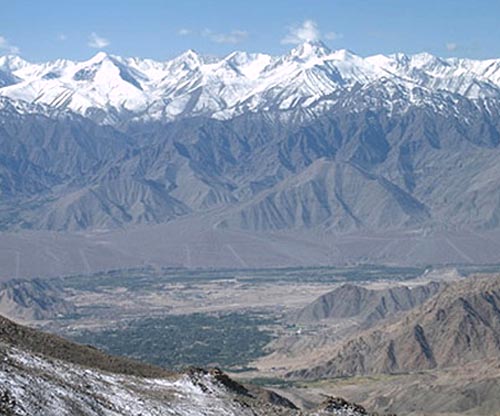

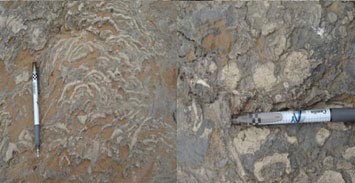
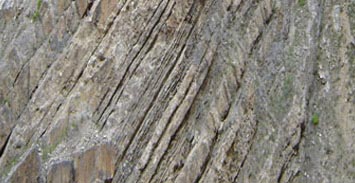
Leh in Indus Valley (Ladakh, J&K) is world renowned as a geological museum of India-Asia collision and rise of the Himalaya. Except some minor interruptions almost the entire Precambrian to Eocene stratigraphic succession is preserved along the Manali – Leh road with ophiolitic mélange in the collision zone which will be unravelled through key stratigraphic sections and traverses. We will cross the highest motorable pass of Khardung La (5359m) and from there we will have an overview of Shyok and Nubra Valleys and the Karakorum Mountain.
The varied landforms caused due to weathering and erosion at high altitude cold desert would also be studied. Traverses through Indus Valley would give the Geoscientists an insight into the numerous processes involved in carving out the spectacular valley.
The field workshop on way to Leh would focus on the importance of Field Geology, Stratigraphy, Sedimentation and Tectonics of the Indus Suture Zone.
Duration : 1 – 9 August (9 days)
Registration and departure from Dehradun and stay and acclimatization at Manali/Solang and Pre-field discussion
Course Duration 9 Days
Inclusive of boarding & lodging, all road travel from Dehradun to Manali – Leh -Srinagar & around Leh, kit and course material. Boarding & lodging will be on twin sharing basis.
Field trip is reserved on first-come-first–serve basis as the course is limited to 30 participants. APG does not maintain insurance covering illness or injury for individuals during field trips. Please check your personal insurance before travelling
APG - FB Field Workshop at Himachal Pradesh From 9th to 15th December 2009
A Field workshop was organised at Himachal Pradesh, under the aegis of APG and Frontier Basins, Dehradun from 9th to 15th December 2009. The purpose of this workshop was to give an idea to the delegates about the leading edge and trailing edge deformation concepts in the Nahan Salient and the Kangra recess. The trip was planned for all geoscientists from industry and academia. The faculty comprised Shri Narendra K. Verma, GM-Basin Manager, Frontier Basins and Dr. V.C. Thakur, Retd. Director, Wadia Institute of Himalayan Geology, Dehradun. Both the faculty members have done extensive field work in these areas, which was evident from the knowledge that was dispersed to the delegates.
The first day’s itinerary covered the Paonta thrust, MBT at Dadahu, Bilaspur thrust beyond Nahan and HFT at Salehpur. The days’ itinerary also included a visit to the Saketi Fossil Park. During the day, the delegates were exposed to the signatures of thrusts in a field setup, depositional conditions for the Siwalik sediments and the evolution of Himalayas in general. Night halt was at Hotel Grand View at Jamta.
Importance of Field Geology stressed at APG Workshop at Manali
A galaxy of ONGCians, past and present are attending the 3rd Workshop and Field Expedition (Spiti Valley),organised by the Association of Petroleum Geologists (APG) which commenced in the salubrious environs of Manali on July 22,2006. The Field Expedition, regularly held by APG, was dovetailed as a part of ONGC's Golden Jubilee celebrations.
The objective of holding this workshop was to introduce to the participants the importance of field geology in hydrocarbon exploration. Eminent faculty comprising Dr O.N.Bhargava, Dr N.S.Virdhi, Dr D.S.N.Raju, and Mr Dilip Mukhopadhyay were introduced to the House. A presentation on Role of Field Geology was made on the occasion. This presentation highlighted the stages of field geological evolution in ONGC. Among the distinguished personalities who graced the dais were Mr S.N.Talukdar, the doyen of the petroleum industry, besides veteran geoscientists, Mr C.K.R Sastry, Mr D.N Awasthi , Mr Jokhan Ram, Executive Director-Chief KDMIPE, and Mr Ashok Srivastava, Basin Manager, Frontier Basins.
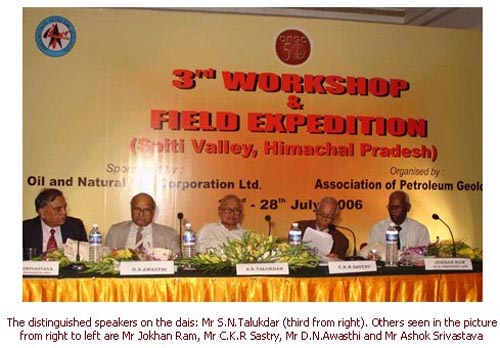
The message of Mr D.K.Pande, Director (Exploration) and the Patron of APG, who could not be present as he was abroad, was read out by Mr Jokhan Ram. The thought provoking message among other pertinent observations stressed on immediate attention to Frontier Basins through insight into the intriguing Himalayas.
In his address, Mr S.N. Talukdar,former Member (Exploration), asserted that field work is the best and only way to come to the understanding of the hydrocarbon habitat. That sieismic, electrologs and even the cores alone do not allow to understand as to what actually occurs in the field. He emphasized the need to generate more data on paleoslopes,. paleo- latitudes and the influence on tectonic plates. He called for interaction of the old and the young which can inject enthusiasm among the younger generation.
Mr D.N. Awasthi, former Member (Personnel), in his address deliberated on deeper crustal processes. He stressed that science is evolutionary and earlier works should be taken as a foundation to arrive at newer hypotheses. He deliberated on continental continental collisions. He hoped that the new hypothesis might turn lean areas of hydrocarbon into areas of high hydrocarbon potential. He enumerated Mr Malaviya's three "mool mantras" - controlled imagination, cautious optimism and calculated risk.
Mr C.K.R. Sastry, former Head Western Region, in his interesting address, said the grand hunt for large structural accumulations are over. He therefore advocated that in the present scenario the practical and pragmatic approach should be to have foreign tie-ups. In fact this was the same philosophy which was adopted by Mr Subir Raha, former C&MD.
Mr Jokhan Ram, Executive Director-Chief KDMIPE and Vice President APG, in his welcome address, spoke on the evolution of the thought process with time and the tremendous possibilities existing in sequence stratigraphic analysis . He pointed out that wisdom cannot be always managed through technology and needs to be shared and passed on .He stressed the need for outcrop teaching to the young scientists He reiterated APG's resolve to arrest the declining trend towards field geology.
Mr Ashok Srivastava,Basin Manager, Frontier Basins expressed concern about the scenario in respect of new finds in the Frontier Basins. He expressed hope that this workshop and field expedition will positively contribute towards new ideas and models of exploration. He said APG is a potential medium which could provide the much needed boost to exploration.
Dr James Peters, General Manager (Geology) and Secretary AGP proposed the vote of thanks and adroitly anchored the programme.
An eye catching exhibition depicting the role of field parties in ONGC and the different basins, was also arranged alongside the Workshop which Mr Talukdar inaugurated.
The Workshop will provide an ideal platform for meaningful interaction between the veteran ONGCians and serving ONGC geoscientists.
APG provides an opportunity for petroleum geologists to share their experiences, ideas, thoughts to benefit the oil industry especially in the field of exploration and production.
The team headed by Dr James Peters, General Manager (Geology) was instrumental in successfully organizing this programme. The other team members included Mr D.S.Mitra, Mr S.Uppal, ,Mr Rajeev Bhoj, Mr Bijay Prasad, Mr Virender Mishra, Mr Ravi Mishra, Mr D.P.Goyal and Mr Ajay Pal.
Approximately 45 participants proceeded for field work on July 24, 2006 for four days to the high altitude Spiti valley. This team includes some retired geologists of ONGC.
Led by Dr James Peters, General Manager ONGC & Secretary APG the team comprised participants from ONGC, Reliance Industries Ltd and ENI, Milan, Italy, two superannuated Geologists from the ONGC two research scholars from IIT Mumbai and three M.Sc. students from IIT Roorkee. The faculty for field work included Dr ON Bhargava Director GSI (Retd) and Prof Dilip Mukhopadhaya from IIT, Roorkee. The participants were given an overview of the Geology of Spiti Valley. Four sections were visited. The section between Muth Village and Domal Village exposes the entire Stratigraphy of the Spiti Basin.
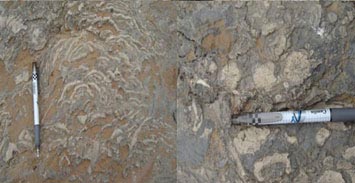
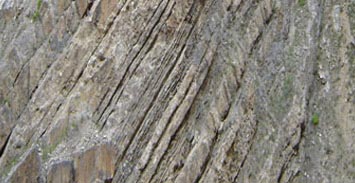
After covering all the different formations in the Spiti valley the team returned to Manali for the Valedictory Function which was chaired by Mr MK Rangaraju , Ex Group General Manager, ONGC.
Association of Petroleum Geologists Announces
2nd Sept. to 11th Sept. 2007 Manali-Kaza, Himachal Pradesh, India
The Spiti Basin is known as Museum of World Stratigraphy for its well-preserved and almost uninterrupted sequence of sediments ranging in age from Pre-Cambrian to Cretaceous. The understanding of Tectonics, Structure, Sedimentation & Stratigraphy of the sediments exposed in Spiti Valley will be unravelled through key traverses.
The varied landforms caused due to weathering and erosion at high altitude cold desert would also be studied. Traverses through Spiti Valley would give the Geoscientists an insight into the numerous geological processes involved in carving out this spectacular valley.
The course envisages one day lecture at Manali by eminent Himalayan Geoscientists highlighting the importance of Field Geology , Stratigraphy and Sedimentation of Spiti- Zanskar Basin and nine days field workshop at Losar and Kaza. The participant would be accommodated in a hotel at Manali & subsequently shifted to field tents at Losar and Kaza.
Course Duration 10 DAYS
Weather in the month of August -September is pleasant during the day time & cold at night. Maximum temperatures will be 20-25°C & minimum 10-15°C. (Night). Participant should carry sufficient woolens and a wind cheater, as it is quite windy during day time.
Field trip is reserved on first-come-first–serve basis as the course is limited to 30 participants. APG does not maintain insurance covering illness or injury for individuals during field trips. Please check your personal insurance before traveling.
Association of Petroleum Geologists Announces
6th to 26th August, 2008 Manali-Kaza, Himachal Pradesh, India
The Spiti Basin is known as Museum of World Stratigraphy for its well-preserved and almost uninterrupted sequence of sediments ranging in age from Pre-Cambrian to Cretaceous. The understanding of Tectonics, Structure, Sedimentation & Stratigraphy of the sediments exposed in Spiti Valley will be unravelled through key traverses.
The varied landforms caused due to weathering and erosion at high altitude cold desert would also be studied. Traverses through Spiti Valley would give the Geoscientists an insight into the numerous geological processes involved in carving out this spectacular valley.
The course envisages one day lectures at Manali by eminent Himalayan Geoscientists highlighting the importance of Field Geology, Stratigraphy and Sedimentation of Spiti- Zanskar Basin and eight days field workshop at Losar and Kaza. The participant would be accommodated in a hotel at Manali & subsequently shifted to field tents at Losar and Kaza. Detailed program will be announced in due course of time.
Course Duration 10 Days
Inclusive of boarding & lodging at Manali & Kaza, transportation to & from Manali to Kaza and other field areas, kit and course material. Boarding & lodging at Manali & Kaza will be on twin sharing basis.
Weather in the month of August is pleasant during the day time & cold at night. Maximum temperatures will be 20-25°C & minimum 10-15°C. (Night). Participant should carry sufficient woolens and a wind cheater, as it is quite windy during day time.
Field trip is reserved on first-come-first–serve basis as the course is limited to 30 participants. APG does not maintain insurance covering illness or injury for individuals during field trips. Please check your personal insurance before traveling.
Association of Petroleum Geologist, India successfully organized 6th APG Field Expedition and workshop at Manali & Kaza
Association of Petroleum Geologists organized 6th APG Field Expedition and Workshop at Manali & Kaza from 22nd August to 31st August, 2009. The workshop was inaugurated by the Chief Guest Shri Y M S Reddy, ED-Chief, E&D Directorate, ONGC, Dehradun on 22nd August, 2009. Among others present on the occasion were Shri Anand Sahu Vice president of APG, eminent faculty members Dr O.N. Bhargava, former Director, Geological Survey of India and Dr. S.K.Parcha, Scientist from Wadia Institute of Himalyan Geology.
A team comprising of 20 participants from ONGC Ltd I were on an Expedition in Spiti Valley led by Shri Anand Sahu, Vice President APG. The faculty for field work included Dr O.N. Bhargava, former Director, Geological Survey of India and Dr. S.K. Parcha from Wadia Institute of Himalayan Geology, Dehradun. Enroute to the campsite in Takche, the structures exposed in the Vaikritas and Haimantas were shown to the participants, an angular unconformity between Cambrian and Ordovician was also shown to the participants.
The participants were given an overview of the Geology of Spiti Valley and an opportunity to carry out field mapping in the Spiti Valley around Takche. The field work was carried out in the Paleozoic sections for two days. Subsequently the camp was shifted to Rangrick campsite and four sections were shown. These included Atargoo- Lalung- Schichiling-Tabo, Ratang Nala, Atargoo- Muth section in Pin valley and Kibber-Giumal sections covering the entire stratigraphy of Spiti Basin from Devonian to Cretaceous.